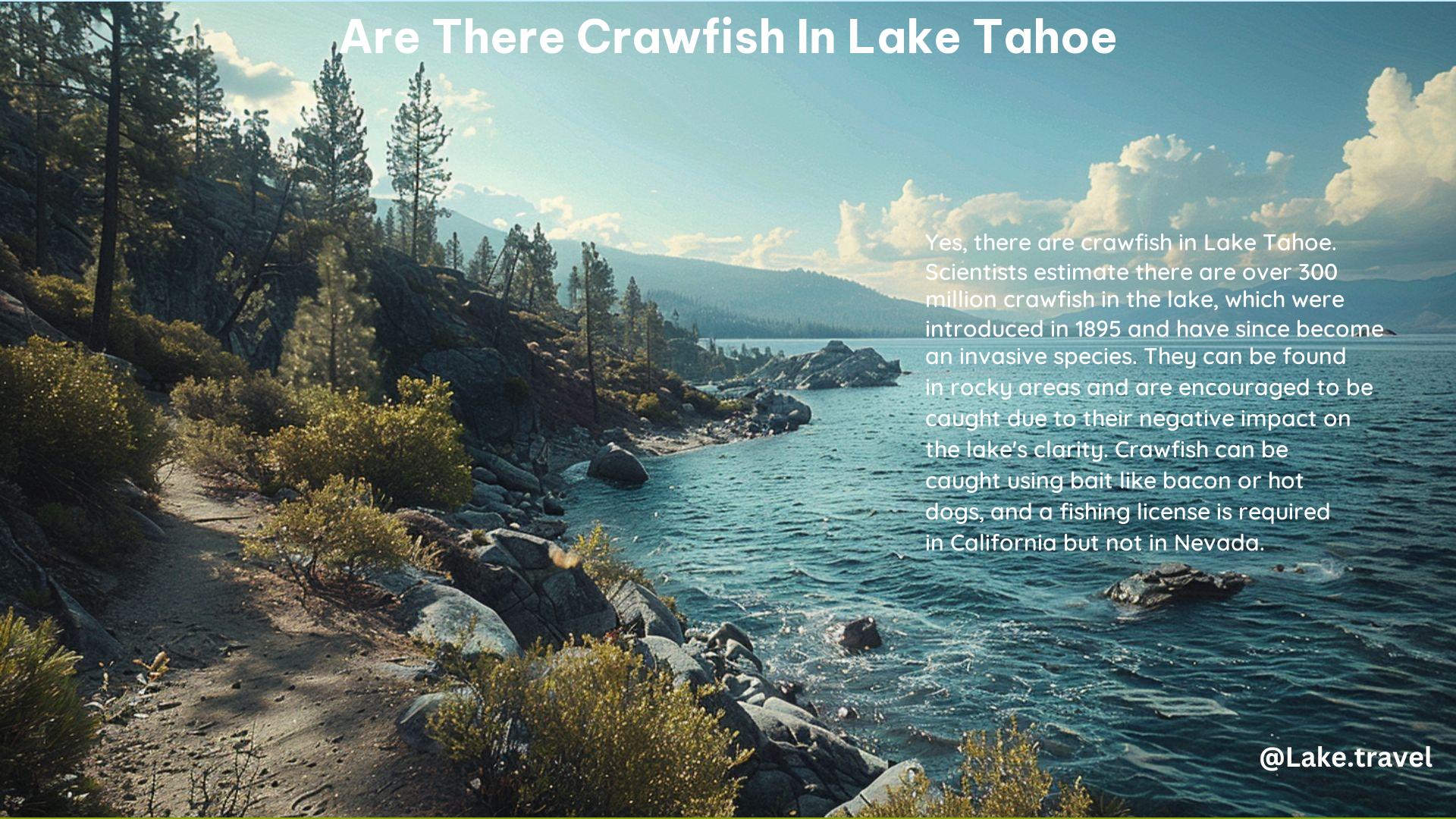Yes, there are crawfish in Lake Tahoe. Crawfish, also known as crayfish, were introduced into Marlette Lake in 1895 and then made their way downstream into Lake Tahoe. It is estimated that there are over 300 million crawfish in the lake, which has a significant impact on the lake’s clarity due to the nutrients they excrete, stimulating further algal production.
The Presence of Crawfish in Lake Tahoe
Crawfish, or crayfish, are small freshwater crustaceans that resemble small lobsters. They are native to many parts of the world, including North America, and have been found in various lakes and rivers throughout the United States.
In the case of Lake Tahoe, crawfish were first introduced into the nearby Marlette Lake in 1895. From there, they were able to make their way downstream into the larger Lake Tahoe, where they have since established a significant population.
The Impact of Crawfish on Lake Tahoe

The presence of crawfish in Lake Tahoe has had a significant impact on the lake’s ecosystem. As bottom-dwelling scavengers, crawfish play a crucial role in the lake’s food chain, consuming a variety of organic matter and serving as a food source for larger predators.
However, the sheer number of crawfish in the lake has also had some negative consequences. Crawfish excrete nutrients, such as phosphorus and nitrogen, which can stimulate the growth of algae in the lake. This, in turn, can lead to a decrease in the lake’s famous clarity, as the algae cloud the water.
Factors Contributing to the Crawfish Population
There are several factors that have contributed to the growth of the crawfish population in Lake Tahoe:
-
Lack of Natural Predators: Lake Tahoe’s ecosystem lacks the natural predators that would typically keep crawfish populations in check, such as large fish or birds of prey.
-
Abundant Food Sources: Crawfish have access to a plentiful supply of organic matter, including decaying plants and other aquatic life, which provides them with a steady source of food.
-
Favorable Water Conditions: The cool, clear waters of Lake Tahoe provide an ideal habitat for crawfish, allowing them to thrive and reproduce.
-
Lack of Competition: With few other crustacean species present in the lake, crawfish have been able to dominate the available ecological niches without significant competition.
Efforts to Manage the Crawfish Population
Given the impact of crawfish on the lake’s clarity, various organizations and agencies have undertaken efforts to manage the crawfish population in Lake Tahoe.
Monitoring and Research
The Tahoe Regional Planning Agency (TRPA) and other environmental organizations have been closely monitoring the crawfish population in the lake, conducting regular surveys and studies to better understand the extent of the problem and the potential solutions.
Removal and Eradication Efforts
In some areas of the lake, efforts have been made to physically remove crawfish from the water, either through trapping or other methods. However, the sheer size of the crawfish population and the vastness of Lake Tahoe make these efforts challenging and often only temporarily effective.
Exploring Potential Solutions
Researchers and environmental experts are also exploring other potential solutions to the crawfish problem in Lake Tahoe. Some ideas that have been proposed include:
-
Introducing Natural Predators: Introducing species that prey on crawfish, such as certain fish or birds, could help to naturally control the population.
-
Altering Habitat Conditions: Making changes to the lake’s environment, such as adjusting water temperature or nutrient levels, could make the habitat less favorable for crawfish.
-
Developing Crawfish-Based Products: Exploring the potential for commercial or recreational use of crawfish, such as for food or bait, could provide an incentive for their removal and help to manage the population.
The Future of Crawfish in Lake Tahoe
As the crawfish population in Lake Tahoe continues to grow, the challenge of managing its impact on the lake’s ecosystem will only become more pressing. While efforts are underway to address the issue, it remains to be seen whether a long-term, sustainable solution can be found.
One thing is certain: the presence of crawfish in Lake Tahoe is a complex and multifaceted issue that will require ongoing monitoring, research, and collaboration between various stakeholders to effectively address.
Conclusion
In conclusion, the presence of crawfish in Lake Tahoe is a significant and ongoing issue that has had a notable impact on the lake’s ecosystem. While efforts are being made to manage the crawfish population, the sheer size and complexity of the problem make it a challenging and ongoing challenge for environmental organizations and researchers.
As we continue to learn more about the role of crawfish in Lake Tahoe and explore potential solutions, it will be important to remain vigilant and committed to preserving the lake’s renowned clarity and ecological balance.
